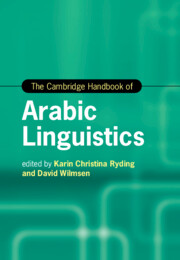Book contents
- The Cambridge Handbook of Arabic Linguistics
- Cambridge Handbooks in Language and Linguistics
- The Cambridge Handbook of Arabic Linguistics
- Copyright page
- Contents
- Figures
- Tables
- Notes on Contributors
- Acknowledgements
- Abbreviations
- Introduction
- Part I Arabic Applied Linguistics
- Part II Arabic Variation and Sociolinguistics
- 7 Diglossia, Variation, and Structural Complexity
- 8 Sociolinguistic Variation and Variation in Sociolinguistics
- 9 What Is Formal Spoken Arabic?
- 10 Arabic Dialectology
- 11 Maltese
- Part III Theoretical and Descriptive Studies
- Part IV Arabic Computational and Corpus Linguistics
- Part V Arabic Linguistics and New Media Studies
- Part VI Arabic Linguistics in Literature and Translation
- Index
- References
11 - Maltese
A Peripheral Dialect in the Historical Dialectology of Arabic
from Part II - Arabic Variation and Sociolinguistics
Published online by Cambridge University Press: 23 September 2021
- The Cambridge Handbook of Arabic Linguistics
- Cambridge Handbooks in Language and Linguistics
- The Cambridge Handbook of Arabic Linguistics
- Copyright page
- Contents
- Figures
- Tables
- Notes on Contributors
- Acknowledgements
- Abbreviations
- Introduction
- Part I Arabic Applied Linguistics
- Part II Arabic Variation and Sociolinguistics
- 7 Diglossia, Variation, and Structural Complexity
- 8 Sociolinguistic Variation and Variation in Sociolinguistics
- 9 What Is Formal Spoken Arabic?
- 10 Arabic Dialectology
- 11 Maltese
- Part III Theoretical and Descriptive Studies
- Part IV Arabic Computational and Corpus Linguistics
- Part V Arabic Linguistics and New Media Studies
- Part VI Arabic Linguistics in Literature and Translation
- Index
- References
Summary
David Wilmsen examines Maltese, a peripheral dialect of Arabic. Of those, Maltese stands out as remarkably unusual. Unlike other dialects of Arabic, it is an official language of the state in which its speakers reside, the Republic of Malta, as well as being an official language of the European Union. It boasts a long literary tradition, a language academy, an active press, scholarly journals and societies devoted to it, and an ever-growing digital presence, including a large online, freely accessible corpus encompassing hundreds of millions of words. It is therefore an easily accessible language for linguistic research. The chapter examines Maltese in light of linguistic thinking about so-called enclave dialects, showing that Maltese conforms to the general characteristics of remnant dialect groupings, in that it does borrow from the languages with which it comes into contact, it does undergo independent internal change, and it does retain features of its founder languages. As such, Maltese can be instrumental in demarking the latest date for the emergence of a range of features found variously in mainland dialects of Arabic.
Keywords
- Type
- Chapter
- Information
- The Cambridge Handbook of Arabic Linguistics , pp. 244 - 274Publisher: Cambridge University PressPrint publication year: 2021



